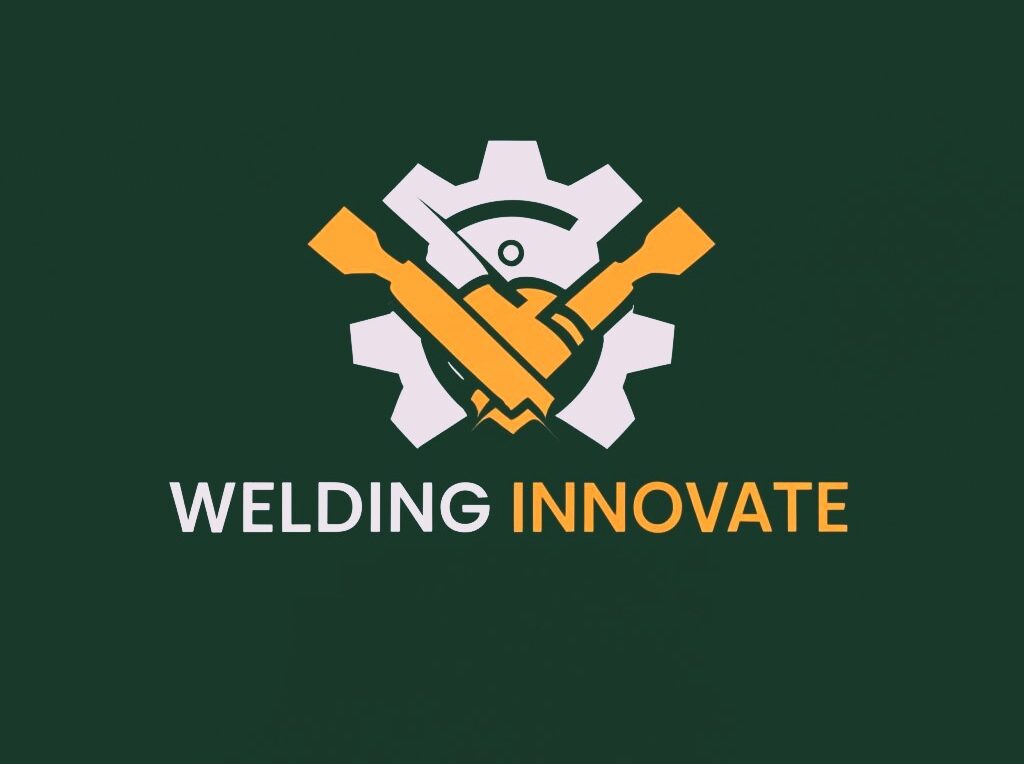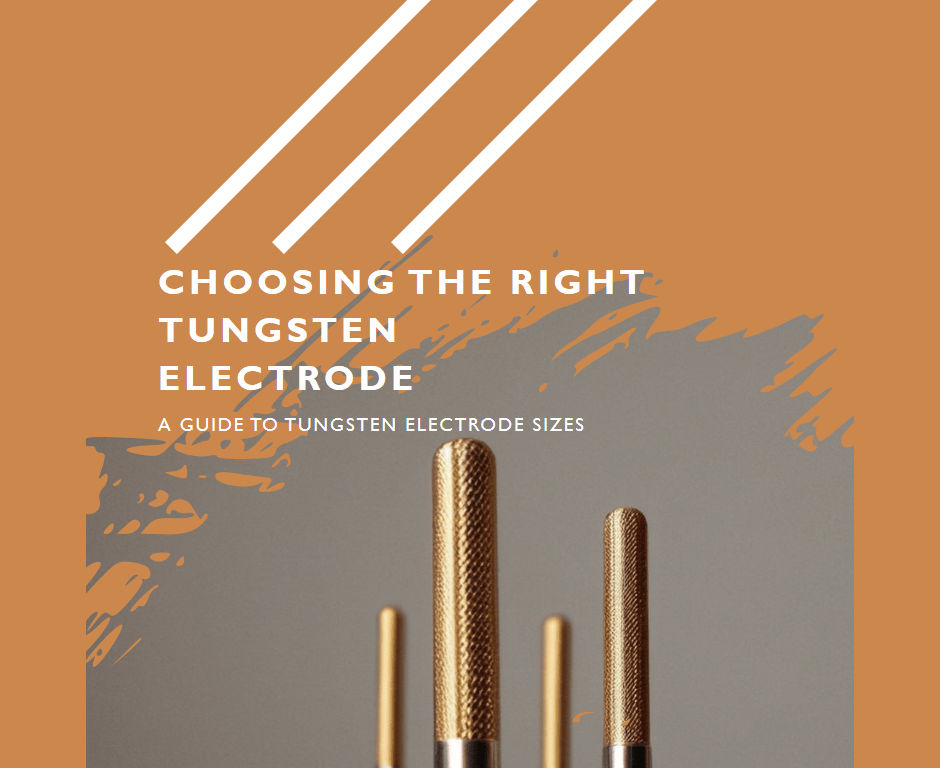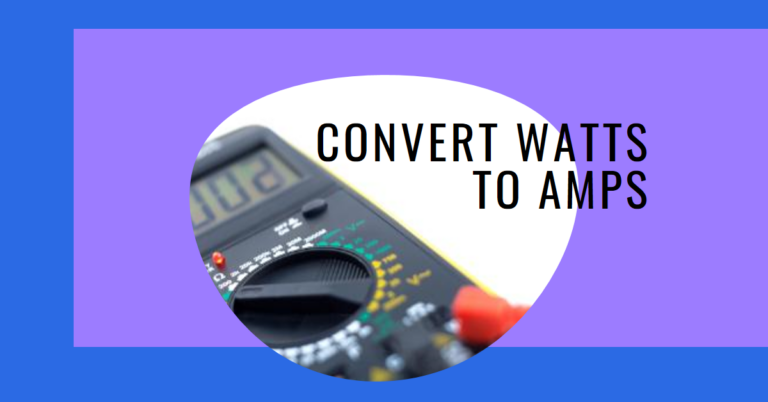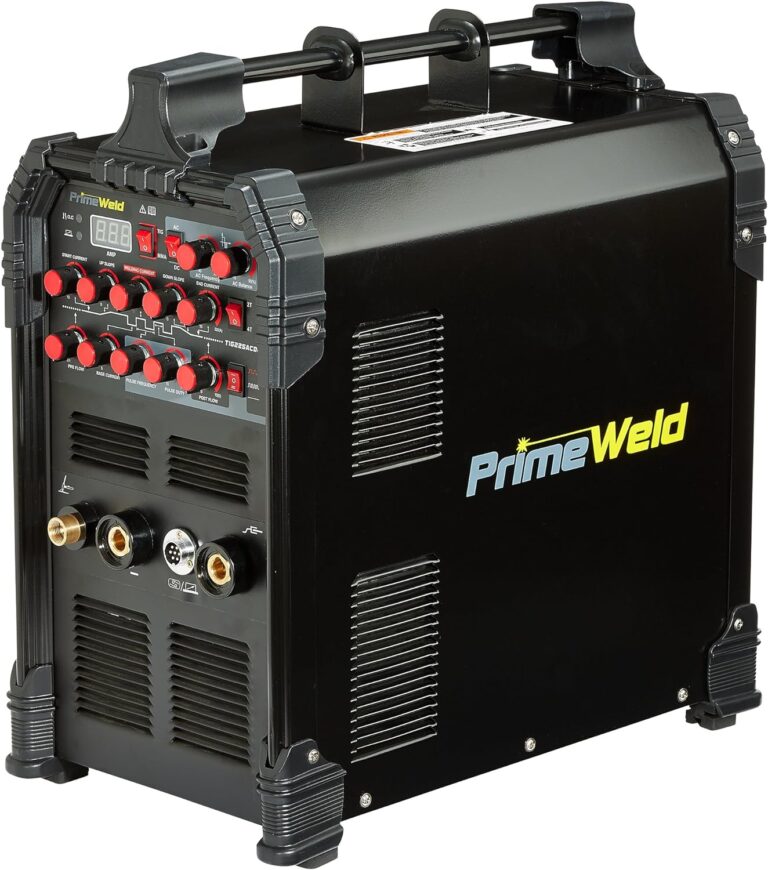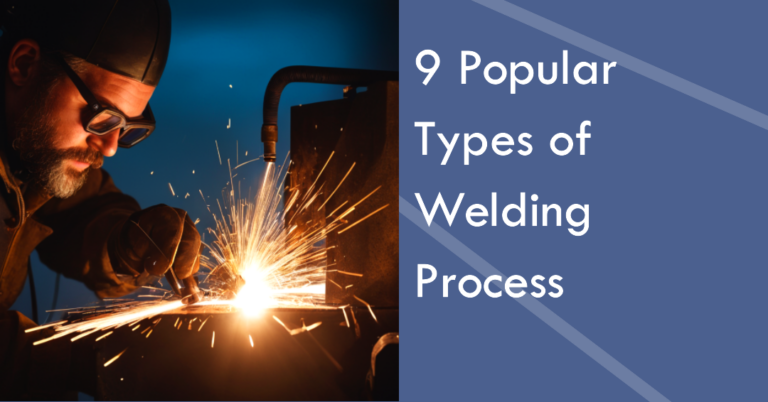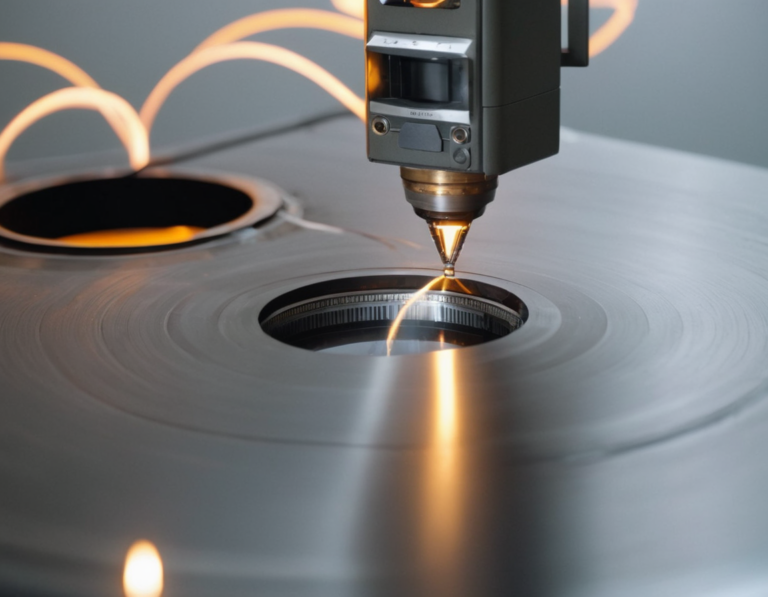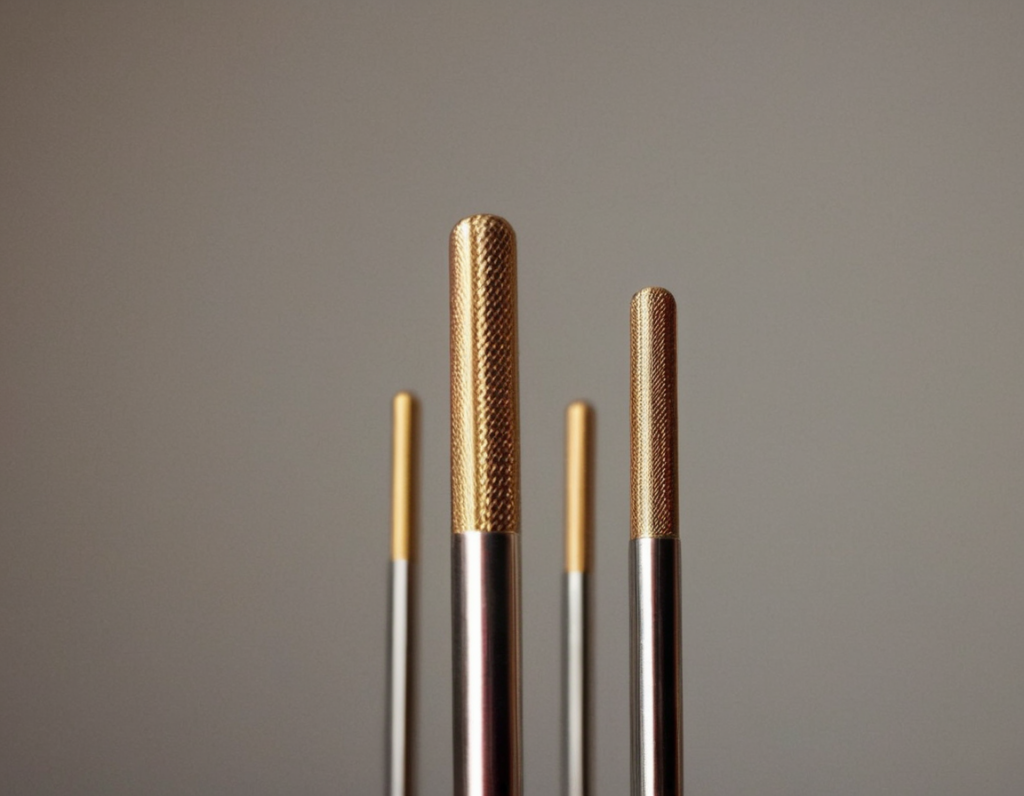
What is a tungsten electrode and where is it used?
A tungsten electrode is a round rod made of pure tungsten or tungsten with additives (alloying agents). Tungsten is used in argon-arc TIG welding with a non-melting electrode.
If you are wondering why “non-melting”, the answer is very simple. Tungsten has the highest melting point among pure metals (3422°C). Therefore, argon-arc welding is performed in direct polarity because the cathodic spot (-) temperature reaches 3000°C and the anodic spot (+) temperature reaches 4000°C. Because of this, the electrode is not consumed during welding, but burns out.
Electrodes can have a clean surface or a ground surface. The distinctive feature of clean electrodes is that they are chemically cleaned, i.e. the workpieces are etched to remove oxides and contaminants from the surface.
This is the most labor-intensive and costly procedure, so it is used much less frequently in industrial production. The ground surface of the electrodes indicates that the electrodes may have been processed by forging, broaching or centerless grinding. The latter method is the most popular, and the thermal conductivity of the electrodes is improved as a result of this fabrication.
The diameter and length of tungsten electrodes can vary. Standard electrodes have lengths from 50 to 175 mm and nominal diameters from 0.5 to 10 mm. The electrodes are made of pure tungsten and tungsten with activating rare earth alloying additives.
Tungsten electrodes are crucial in TIG (GTAW) welding, preventing the formation of oxides on the weld surface. This process occurs within a shielding gas environment, effectively keeping oxygen out of the weld zone. If you’re in the market for top-notch TIG welders at an affordable price, consider exploring the options available for the Best TIG welders under $1000.
This type of welding uses a chemically inert gas (noble gas), and we wrote about her in this article: How does a TIG welder work? These gases include helium, argon and special welding mixtures. The distinctive feature of these gases is that they have very low chemical reactivity, in other words, they do not interact with the weld metal. These gases are also colorless and odorless.
Recommendations for selecting electrode diameter and welding current
The quality of the welding seam directly depends on the correctly selected diameter of the welding electrode and the set current. Therefore, we have prepared special recommendations for you, which will help you to achieve the best possible welding results.
| Electrode diameter, mm | Recommended current for welding in argon (AC), A | Recommended current for helium welding (AC), A | Recommended current for welding in argon (DC), A | Recommended current for helium welding (DC), A |
| 1,0 | up to 60 | up to 50 | up to 70 | up to 50 |
| 1,6 | 60-120 | 50-110 | 70-120 | 50-100 |
| 2,0 | 70-130 | 60-120 | 90-150 | 70-130 |
| 2,4 | 100-180 | 90-160 | 110-180 | 90-150 |
| 3,0 | 140-230 | 120-200 | 150-220 | 120-200 |
| 3,2 | 160-250 | 150-220 | 180-270 | 160-250 |
| 4,0 | 200-320 | 180-300 | 200-350 | 180-320 |
International marking according to ISO 6848 standards
Most tungsten alloys have been standardized by the International Organization for Standardization in ISO 6848. The table below summarizes the letter-number designations and percentage composition of alloying additives.
Tungsten electrode size chart
| Letter designation | Color code | Mass fraction of alloying additives |
| WP | Green | – |
| WC-20 | Gray | ~2% |
| WL-10 | Black | ~1% La₂O₃ |
| WL-15 | Gold | ~1.5% La₂O₃ |
| WL-20 | Blue | ~2% La₂O₃ |
| WT-10 | Yellow | ~1% ThO₂ |
| WT-20 | Red | ~2% ThO₂ |
| WT-30 | Purple | ~3% ThO₂ |
| WT-40 | Orange | ~4% ThO₂ |
| WY-20 | Blue | ~2% Y₂O₃ |
| WZ-3 | Brown | ~0.3% ZrO₂ |
| WZ-8 | White | ~0.8% ZrO₂ |
| TUNGSTEN ELECTRODES | ||||
| ISO 6848 COLOR CHART | SIZE | PART # | ||
| INCHES | MILLIMETERS | 10 PIECE | 3 PIECE P.O.P | |
| 2% Thoriated | .020 X 7″ | 0.5 X 175mm | T0207GT2 | |
| .040 X 7″ | 1.0 X 175mm | T0407GT2 | ||
| Red | 1/16 X 7″ | 1.6 X 175mm | T1167GT2 | T1167GT2-3 |
| AWS A5.12 EWTh-2ISO 6848 WT20 | 3/32 X 7″ | 2.4 X 175mm | T3327GT2 | T3327GT2-3 |
| 1/8 X 7″ | 3.2 X 175mm | T187GT2 | T187GT2-3 | |
| 5/32 X 7″ | 4.0 X 175mm | T5327GT2 | ||
| .8% Zirconiated | .020 X 7″ | 0.5 X 175mm | T0207GZ | |
| .040 X 7″ | 1.0 X 175mm | T0407GZ | ||
| White | 1/16 X 7″ | 1.6 X 175mm | T1167GZ | T1167GZ-3 |
| AWS A5. 12 EWZr-8ISO 6848 WT8 | 3/32 X 7″ | 2.4 X 175mm | T3327GZ | T3327GZ-3 |
| 1/8 X 7″ | 3.2 X 175mm | T187GZ | T187GZ-3 | |
| 5/32 X 7″ | 4.0 X 175mm | T5327GZ | ||
| 1.5% Lanthanated | .020 X 7″ | 0.5 X 175mm | T0207GL | |
| .040 X 7″ | 1.0 X 175mm | T0407GL | ||
| Gold | 1/16 X 7″ | 1.6 X 175mm | T1167GL | T1167GL-3 |
| AWS A5.12 EWLa-1.5ISO 6848 WT15 | 3/32 X 7″ | 2.4 X 175mm | T3327GL | T3327GL-3 |
| 1/8 X 7″ | 3.2 X 175mm | T187GL | T187GL-3 | |
| 5/32 X 7″ | 4.0 X 175mm | T5327GL | ||
| 2% Ceriated | .020 X 7″ | 0.5 X 175mm | T0207GC2 | |
| .040 X 7″ | 1.0 X 175mm | T0407GC2 | ||
| Grey | 1/16 X 7″ | 1.6 X 175mm | T1167GC2 | T1167GC2-3 |
| AWS A5.12 EWCe-2ISO 6848 WC20(Formerly Orange) | 3/32 X 7″ | 2.4 X 175mm | T3327GC2 | T3327GC2-3 |
| 1/8 X 7″ | 3.2 X 175mm | T187GC2 | T187GC2-3 | |
| 5/32 X 7″ | 4.0 X 175mm | T5327GC2 | ||
| Pure | .020 X 7″ | 0.5 X 175mm | T0207G | |
| .040 X 7″ | 1.0 X 175mm | T0407G | ||
| Green | 1/16 X 7″ | 1.6 X 175mm | T1167G | T1167G-3 |
| A5. 12 EWPISO 6848 WP | 3/32 X 7″ | 2.4 X 175mm | T3327G | T3327G-3 |
| 1/8 X 7″ | 3.2 X 175mm | T187G | T187G-3 | |
| 5/32 X 7″ | 4.0 X 175mm | T5327G | ||
2% Lanthanated | .020 X 7″ | 0.5 X 175mm | T0207GL2 | |
| .040 X 7″ | 1.0 X 175mm | T0407GL2 | ||
| Blue | 1/16 X 7″ | 1.6 X 175mm | T1167GL2 | T1167GL2-3 |
| AWS A5.12 EWLa-2ISO 6848 WL20 | 3/32 X 7″ | 2.4 X 175mm | T3327GL2 | T3327GL2-3 |
| 1/8 X 7″ | 3.2 X 175mm | T187GL2 | T187GL2-3 | |
| 5/32 X 7″ | 4.0 X 175mm | T5327GL2 | ||
LaYZr™ (Lanthanated, Yttrium, and Zirconiated Blend) | .020 X 7″ | 0.5 X 175mm | T0207GTM | |
| .040 X 7″ | 1.0 X 175mm | T0407GTM | ||
| Chartreuse | 1/16 X 7″ | 1.6 X 175mm | T1167GTM | T1167GTM-3 |
| AWS A5.12 EWGISO 6848 | 3/32 X 7″ | 2.4 X 175mm | T3327GTM | T3327GTM-3 |
| 1/8 X 7″ | 3.2 X 175mm | T187GTM | T187GTM-3 | |
| 5/32 X 7″ | 4.0 X 175mm | T5327GTM | ||
What are alloying additives and rare earth metals?
We have considered the alphanumeric designations of tungsten electrodes, now it is time to talk about rare earth metals (elements), which are included in the composition of electrodes, and more precisely in alloying additives (additives).
Rare earth metals are a group of 17 elements that includes scandium, yttrium, lanthanum and lanthanides. All these metals are silvery-white in color, similar in chemical and physical properties, and form refractory, practically insoluble in water oxides.
The name “rare earth” was given to these metals because they are rarely found in the Earth’s crust, and they are also difficult to mine and industrially produce.
Additives with lanthanum, cerium, yttrium, zirconium and thorium are most commonly used in tungsten welding electrodes.
Properties of filler metals and their influence on weld quality
Tungsten electrode WP (green)
Pure tungsten electrodes are classified as WP and have a green color code. They have a tungsten content of at least 99.5%.
- Features: Electrodes labeled WP provide high arc burning stability, but have poor heat resistance and electron emission. Because of this limited heat load, the working end of the electrode must be ground into a rounded shape (ball).
- Current type: Designed for welding with sinusoidal current (AC) in argon or helium.
- Metal: This type of electrode is designed for welding aluminum magnesium, nickel and their alloys.
Due to the fact that WP electrodes were used on transformer equipment, and now most welding equipment is inverter-based, the need for these electrodes has significantly decreased.
Tungsten electrodes WL-10 (black), WL-15 (gold) and WL-20 (blue)
WL-10 is an electrode containing lanthanum oxide (La₂O₃), black color code. The mass fraction of lanthanum oxide reaches up to 1%.
WL-15 is an electrode containing lanthanum oxide (La₂O₃), gold color code. The mass fraction of lanthanum oxide varies from 1.4 to 1.6%.
WL-20 is an electrode containing lanthanum oxide (La₂O₃) with a mass fraction of up to 2.2%. The color code of the electrode is blue.
- Features: These versatile electrodes withstand high current loads, improve arc burn stability and ease of start-up while reducing burnout. Lanthanum electrodes are less likely to contaminate the weld with tungsten, which is especially important for finishing work. They also keep the sharpening of the working end for a long time.
- Type of current: Electrodes can be used in direct and alternating current (AC/DC) welding.
- Metal: Used for welding carbon and alloy steels, aluminum, titanium, nickel, copper and magnesium alloys.
Tungsten electrodes WC-10 (pink) and WC-20 (gray)
WC-10 is an electrode containing cerium oxide (CeO₂), pink color code. The mass fraction of cerium oxide reaches up to 1%.
WC-20 is an electrode containing cerium oxide (CeO₂), the mass fraction of which varies from 1.8 to 2.2%. It has a gray color code.
- Features: Cerium as an alloying element improves arc burn stability and ease of start-up while reducing burnout. WC-10/20 tungsten is recommended for short welding cycles at low currents.
- Current type: Cerium electrodes are designed for direct and alternating current (AC/DC) welding.
- Metal: Electrodes are designed for welding aluminum, all types of steels and their alloys, especially thin sheet.
Tungsten electrode WY-20 (blue)
This is a tungsten electrode containing yttrium oxide (Y₂O₃), which has a blue color code. The mass fraction of the alloying additive ranges from 1.8 to 2.2%.
- Features: Ittrium tungsten electrodes can withstand high currents, if the welding technology is followed, they provide a high-quality and reliable weld, so they are especially suitable for welding of especially critical structures.
- Current type: Designed for welding on direct current (DC) only.
- Metal: This type of electrode is suitable for welding all types of steel, titanium, copper and their alloys.
WZ-3 (brown) and WZ-8 (white) tungsten electrodes
WZ-3 is an electrode containing zirconium oxide (ZrO₂), brown color code. The mass fraction of cerium oxide reaches up to 0.3%.
WZ-8 is an electrode containing zirconium oxide (ZrO₂), the mass fraction of which varies from 0.7 to 0.9%. It has a white color code.
- Features: This type of electrodes can be used for welding at high currents. They have poor arc stability and are very demanding to the cleanliness of the weld pool. It is recommended to sharpen the working end of these electrodes in the shape of a hemisphere.
- Current type: Designed for welding on alternating current (AC) only.
- Metal: Electrodes are designed for welding aluminum, magnesium, nickel, bronze and their alloys.
WT tungsten electrodes
WT brand electrodes are doped with thorium oxide (ThO₂) and include the following varieties:
- WT-10 – yellow color code, thorium dioxide content up to 1%;
- WT-20 – red color code, thorium dioxide content up to 2%;
- WT-30 – violet color code, thorium dioxide content up to 3%;
- WT-40 – orange color code, thorium dioxide content up to 4%.
Tungsten electrodes made of thorium oxide alloy are used in direct current (DC) welding of stainless steel, copper, nickel, titanium and their alloys.
An important and distinctive feature of thorium is its radioactivity. Thorium is considered a radioactive metal, making inhalation of vapors and dust a health risk to the welder’s health and disposal a risk to the environment.
